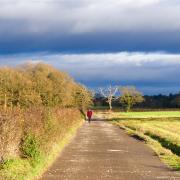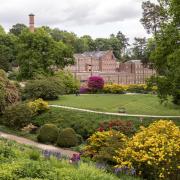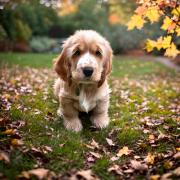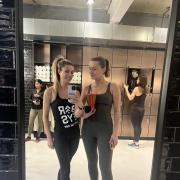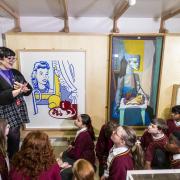Wirral artist Steve Caldwell trained as a medical illustrator. Now he’s using that knowledge of the human body to produce portraits of stunning detail

Surely it’s a photograph, you think. The sheen of the black leather jacket, the rich red waves of hair, the way every freckle is captured so forensically...it’s all just perfect.

Only when you look closer do the brush strokes give the game away. The portrait of Liverpudlian dancer Abbie Coughlan is a painting - one of the more intricate works by Steve Caldwell, a 42-year-old illustrator from Bebington, Wirral, who has for the last three years concentrated on portraits which are uncannily lifelike.
‘That probably took over a month, working 12 to 14 hours a day,’ he says of the portrait of Abbie. ‘I saw her and she struck me as having a lot of poise. She’s fairly regal, like a modern-day Elizabethan.’
Even more intriguing is Steve’s portrait of the snappily-dressed man adjusting his glasse and looking just a little like cycling hero Sir Bradley Wiggins. For this is Steve’s identical twin brother Brendan, a teacher of art history from Heswall, Wirral. A little like a self-portrait, then? Not so, says Steve.
‘We are very different. I’m quite quiet and fairly shy, but he’s slightly intense and has got some attitude,’ he adds.
Steve’s fascination with painting people goes back to childhood.
‘I always enjoyed painting and drawing. A lot of kids lose interest when they get to seven or eight years old, but I never lost interest,’ says Steve. ‘I would draw the characters off TV, like Doctor Who.
‘The thing I enjoyed most at art college was life drawing, where you can spend an entire day drawing a model in different poses.’
From Wirral Metropolitan College, he went to the North East Wales Institute of Higher Education, Wrexham, training as a medical artist.
‘There were only two courses in the country doing that kind of thing. It is very niche,’ says Steve. ‘It was anatomy and physiology and looking at how people are put together.’
But after signing up with an agent in Marylebone, the work Steve tended to get were commissions for children’s books and illustrations for romantic short stories in magazines such as The People’s Friend.
‘I did hundreds of those and I loved doing them,’ he says. ‘But I became more and more interested in concentrating on what I was painting instead of doing very quick turnaround illustration work. I wanted to spend a long time on a painting, sometimes months, and really get it right without fear of a deadline.’
‘Ideally I meet the sitter, make drawings and take hundreds of shots, then work from about 20 of them of different exposures and piece the painting together that way.’
Among his plaudits, Steve was shortlisted for Artist of the Year by Artists and Illustrators magazine, for another painting of a subject whose red hair is captured in seemingly impossible detail.
‘Jen works for my local framers. I always like the way her hair hangs over her face,’ says Steve. ‘She always looks slightly stressed, but she’s lovely.’ n
More about portrait painter Steve Caldwell at www.stevecaldwell.co.uk
How do you create a painting as real as a photograph?
Steve Caldwell works with acrylic paint on wooden panels covered with gesso, a primer which makes the surface slightly absorbent.
‘I draw the image lots and lots of times in pencil to make sure it’s as accurate as I can get it,’ says Steve. ‘Then I build up using very thin glazes of paint. Acrylic paint dries very quickly, so you can keep putting layers of paint on, one on top of another, without having to wait weeks for it to dry.
‘It takes a long time and you are really thinking about the colours involved. If you look at skin tones, for instance, there are pinks in there, greens in there. It all adds up to a more realistic image.
‘There are hundreds of layers. When you see the painting in real life, there is texture to it. You can see the brush strokes and the feel of the paint is there.’




